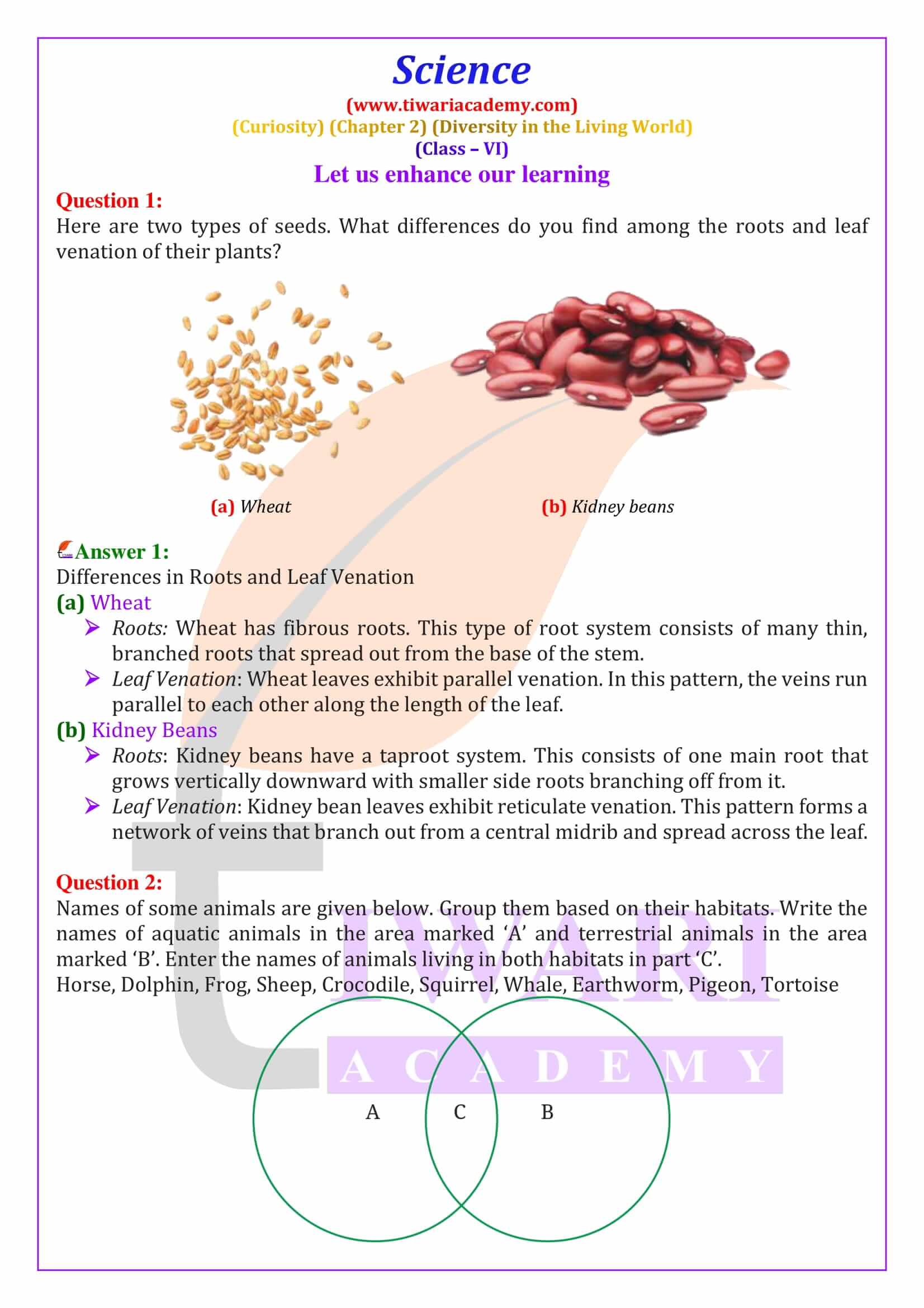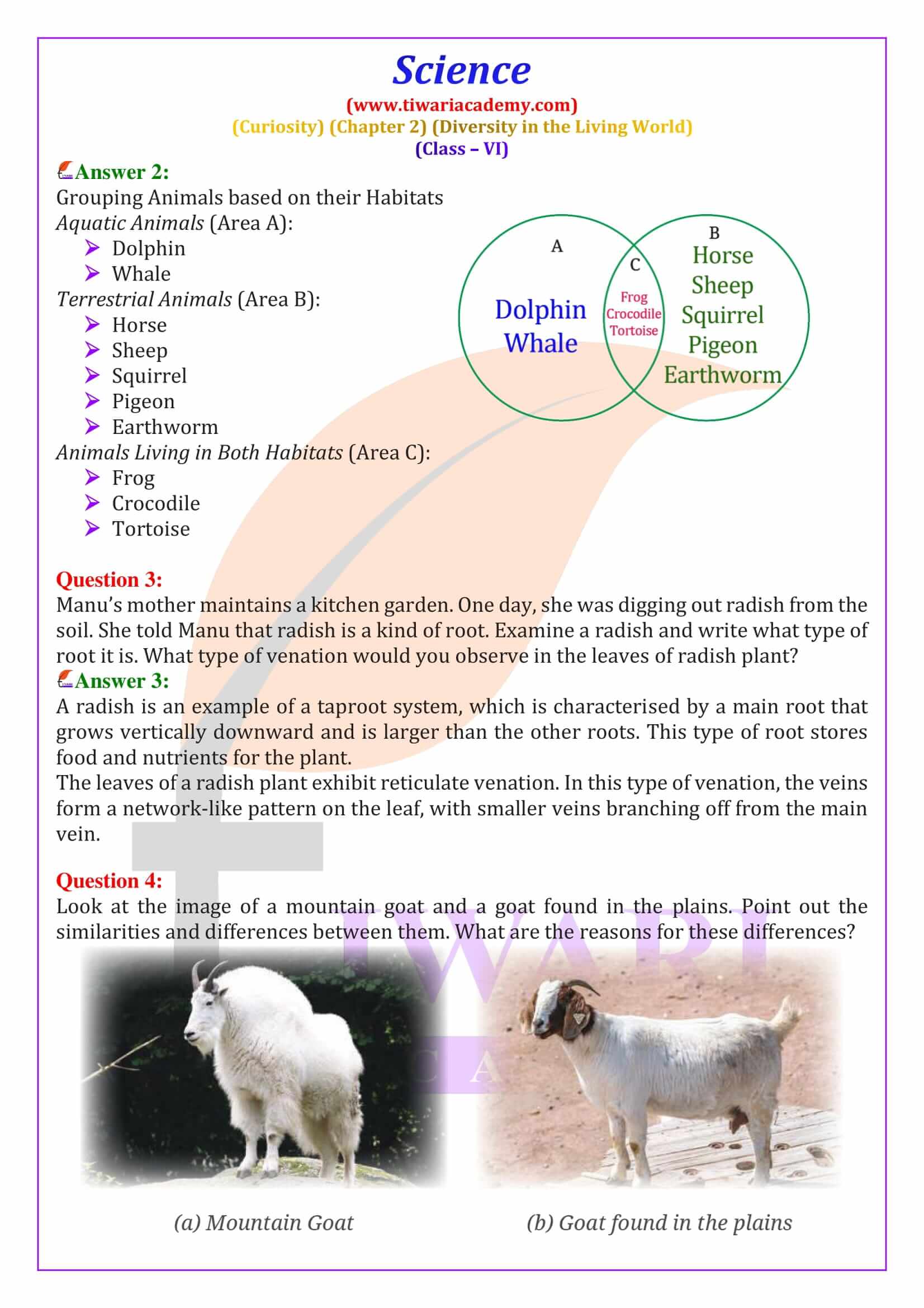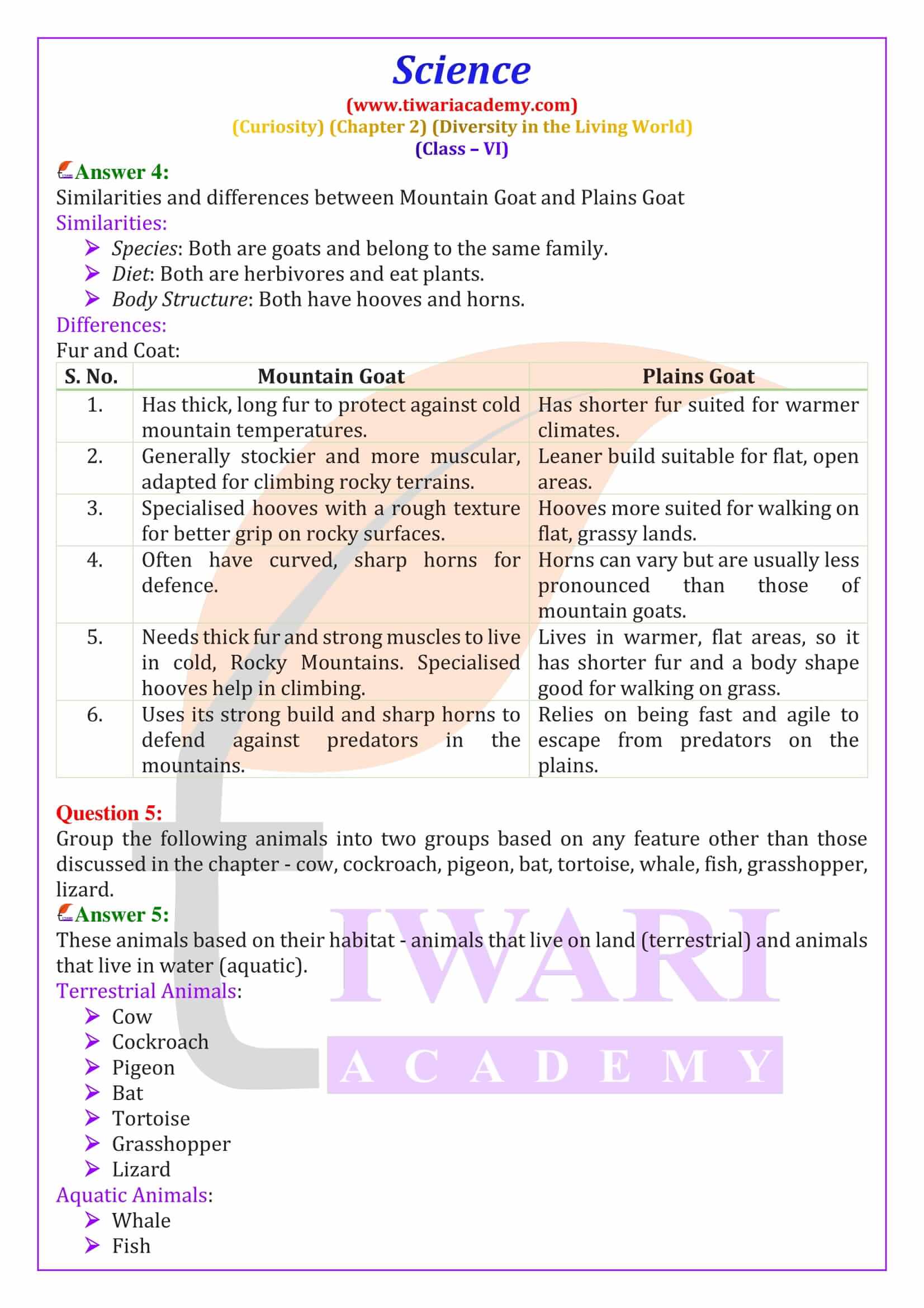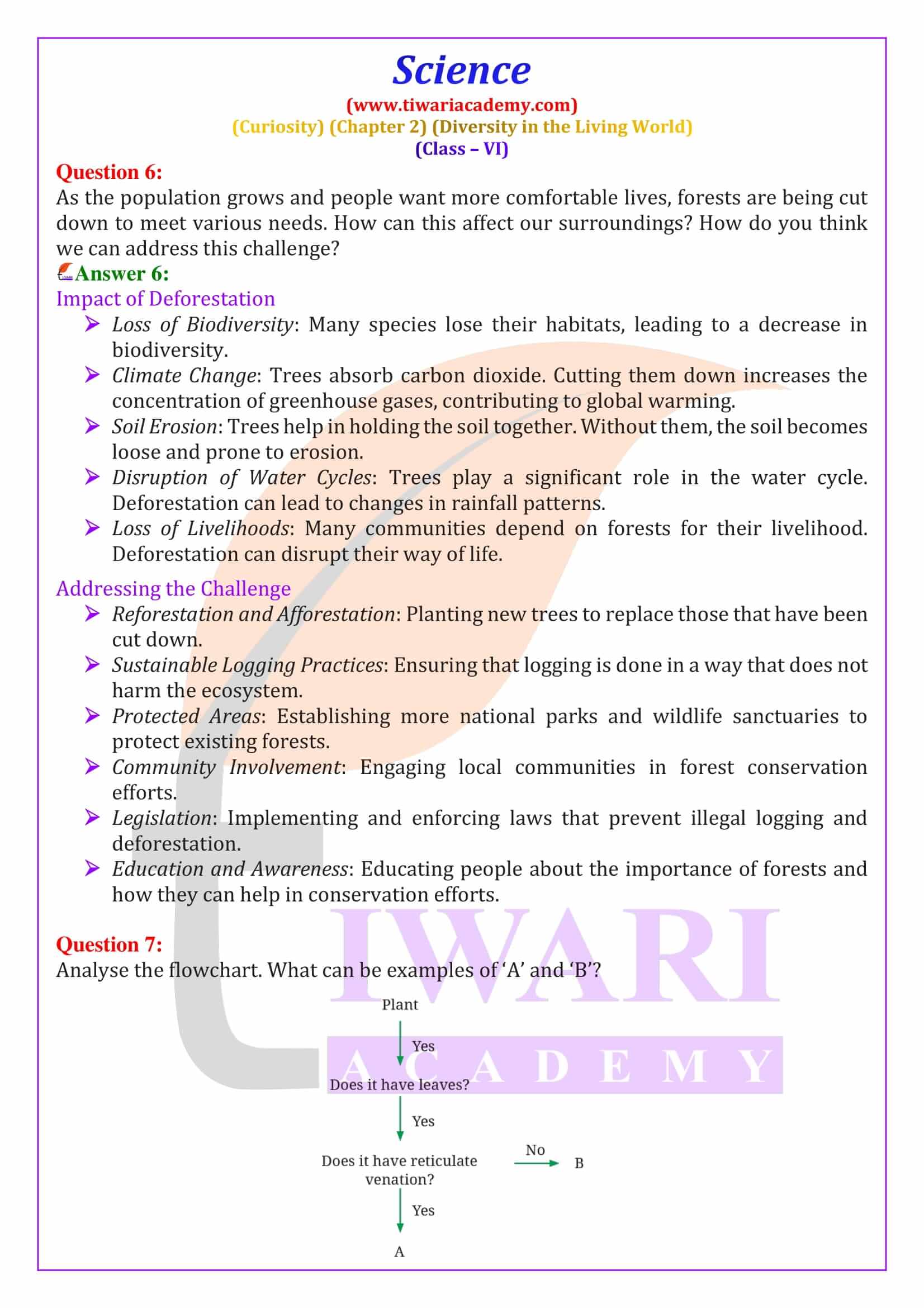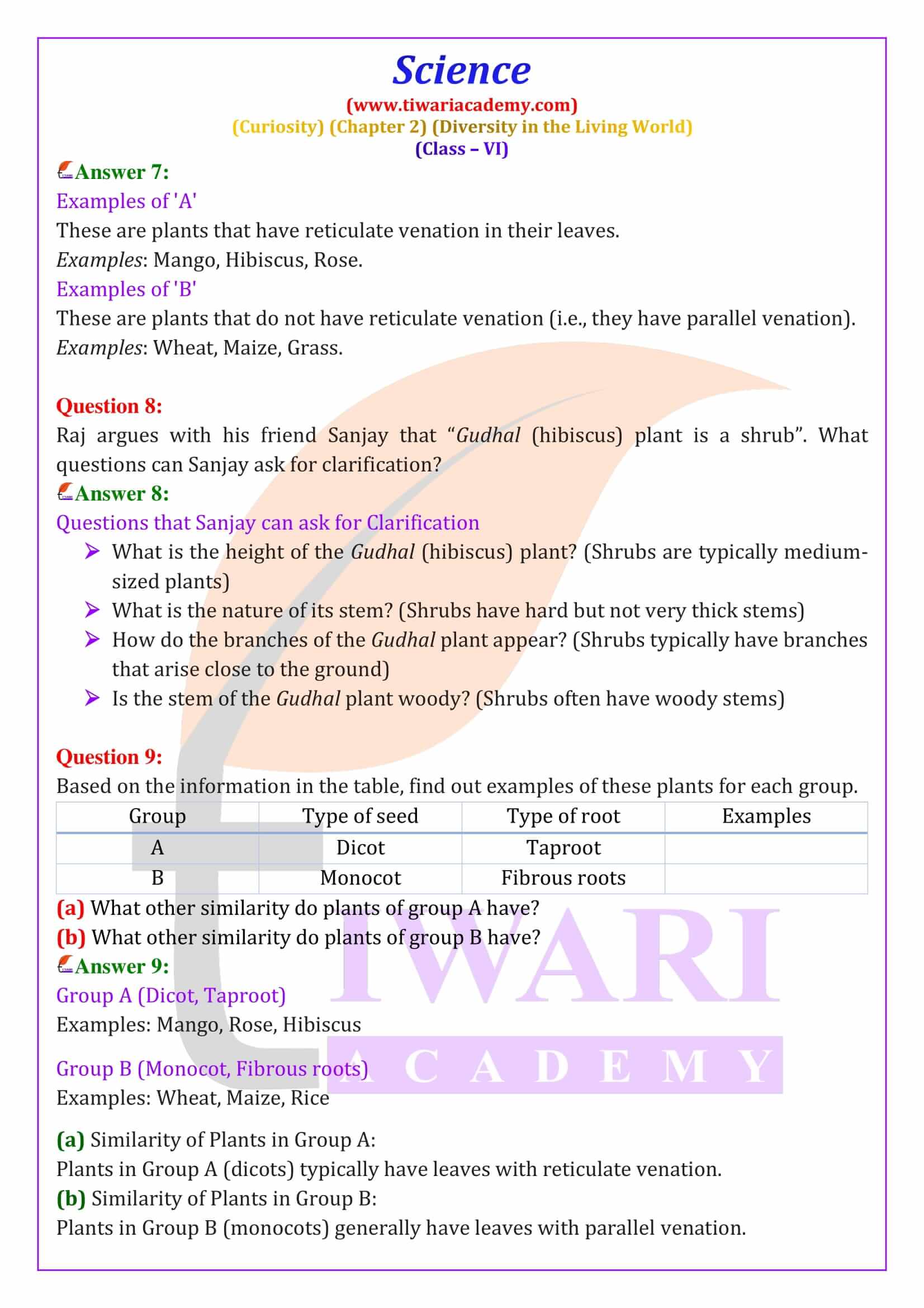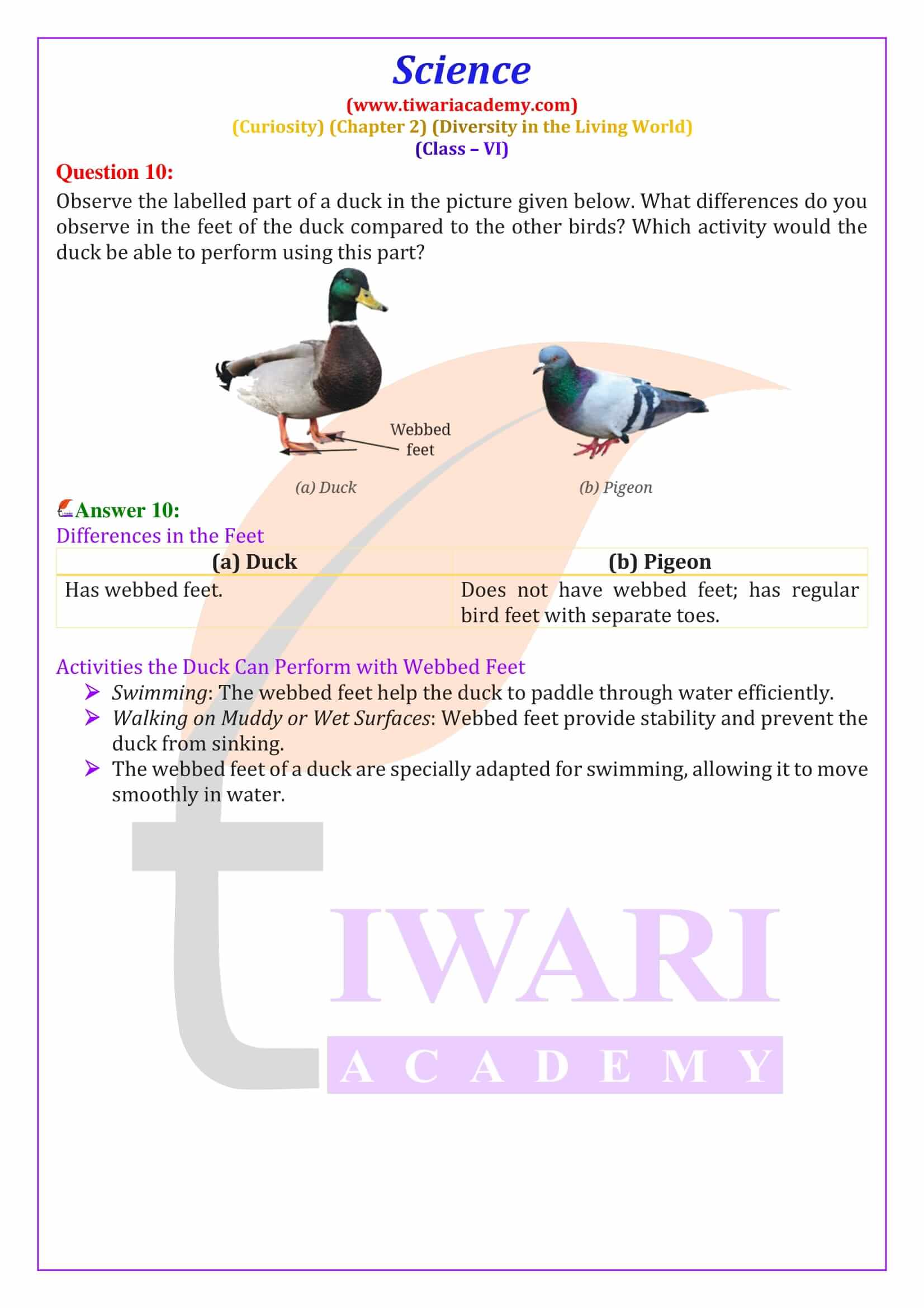NCERT Solutions for Class 6 Science Curiosity Chapter 2 Updated for Academic Session 2025-26, Diversity in the Living World in Hindi and English Medium. Question Answers of Class 6 Science Chapter 2 are given here with complete explanation and easy to learn format.
Class 6 Science Curiosity Chapter 2 Diversity in the Living World
Class 6 Science Chapter 2 Diversity in the Living World
The Class 6 Science Chapter 2, of 6th Science, opens with an inspiring saying about trees providing shade and fruits for others, likening it to good people who endure hardships for the welfare of others. The narrative then introduces Dr. Raghu and Maniram chacha, who guide students on a nature walk to explore the diversity of plants and animals. This sets the stage for understanding the importance of observing and respecting nature’s variety.

Observing Plant and Animal Diversity in Class 6 Science Chapter 2
During the nature walk, students are encouraged to observe different plants and animals, noting features like the smell, appearance and sounds. Class 6 Science chapter 2 emphasizes the uniqueness of each bird’s chirp as an example of nature’s diversity. The students record their observations in a table, detailing the features of different plants and animals they encounter, highlighting the wide range of characteristics in nature.
Grouping Plants Based on Features
Class 6 Science Chapter 2 explains how plants can be grouped based on various features such as stem type, leaf shape and flower characteristics. Activities are provided for students to observe these features closely and classify plants accordingly. For example, plants can be grouped into herbs, shrubs and trees based on their height and stem nature. The concept of leaf venation (reticulated and parallel) is also introduced, further aiding in the classification.
Root Types and Plant Classification in Class 6 Science Chapter 2
Class 6 Science Chapter 2 of class 6 science, describes the root systems of plants, distinguishing between taproots and fibrous roots. It explains that plants with reticulated venation typically have taproots, while those with parallel venation have fibrous roots. Activities are suggested to help students observe and classify plants based on their root types and leaf venation, fostering a deeper understanding of plant diversity.
Class 6 Science Chapter 2 for Grouping Animals and their Adaptations
The diversity among animals is explored, with a focus on their habitats, food sources and movement. Class 6 Science Chapter 2 describes how animals can be grouped based on these features and their adaptations to their environments. For example, the streamlined bodies of fish help them swim in water, while the long legs and wide hooves of camels enable them to walk on sand. The concept of adaptations is highlighted, explaining how these features help animals survive in specific habitats.
Importance of Biodiversity and Conservation
This chapter explains the importance of biodiversity and the need to protect it. It also discusses how the destruction of habitats leads to a loss of biodiversity and highlights conservation efforts like Project Tiger. The chapter 2 introduces the concept of sacred groves, which are community-protected areas that preserve biodiversity. Students are encouraged to engage in activities that promote the understanding and conservation of biodiversity, ensuring a thriving planet for all forms of life.
